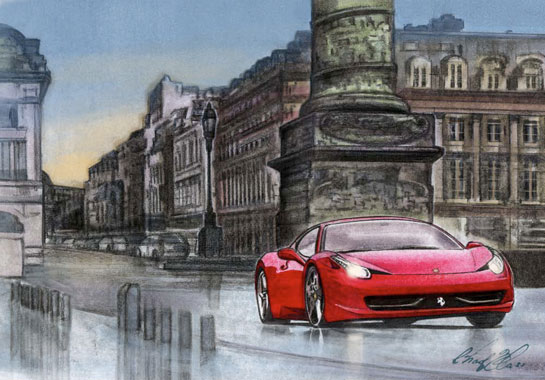
Would it be possible to recreate Claude Lelouch's legendary film 'Rendezvous'? Director Stephen Mitchell would use a new Italia.. Original art, 'Rendezvous with 458 Italia' for VeloceToday by Chad Glass.
By Stephen Mitchell
Artwork by Chad Glass
French Translation follows English text
When Stephen Mitchell was recently introduced to VeloceToday by Wallace Wyss, he told us a bit about himself, mentioning Ferrari, film making, and Paris. We added this up and asked him his thoughts on, of course, Claude Lelouch’s film ‘Rendezvous’. Bingo!! We pressed the right button.
Mitchell was born and raised to have a Hollywood career–literally. A native of Los Angeles, he studied sound, cinematography and editing with department heads from CBS Cinema Center in Studio City, California where Steve McQueen had his Solar Productions. Working as an extra and in small speaking parts in Hollywood films, he practically lived on the set of the television series Mission: Impossible as a family friend directed many of the show’s episodes. Obviously a film career was in the making, but instead of Hollywood, Mitchell’s film career began in France. “I went to Paris because I saw a film by Claude Lelouch—“A Man and a Woman”. It showed me exactly the kind of film I wanted to be making and it wasn’t happening in Hollywood.” We’ll let Mitchell take it from here…
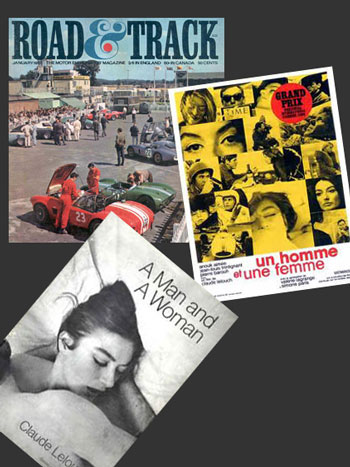 While my interest in films was already well established, strangely enough my passion for cars took root while I was recovering from a head-on collision on the Ventura Freeway. I wasn’t expected to live through the first night but, in the end, my father and I both survived. I read one Road & Track magazine after another, learning and becoming excited about Ferraris, Formula One and the incredible collection of personalities that populated those worlds. It was family friend and mentor Paul Stanley, the director who issued a standing invitation to visit the sets he worked on, who told me I should see A Man and a Woman. (1966) It had impressed him and he figured I would like it, too. That was an understatement.
While my interest in films was already well established, strangely enough my passion for cars took root while I was recovering from a head-on collision on the Ventura Freeway. I wasn’t expected to live through the first night but, in the end, my father and I both survived. I read one Road & Track magazine after another, learning and becoming excited about Ferraris, Formula One and the incredible collection of personalities that populated those worlds. It was family friend and mentor Paul Stanley, the director who issued a standing invitation to visit the sets he worked on, who told me I should see A Man and a Woman. (1966) It had impressed him and he figured I would like it, too. That was an understatement.
I can’t say what impressed me most about the A Man and a Woman because there was so much hitting me at once. The beautiful Anouk Aimée with her reserved sensuality so different from that of American actresses cast a spell on me that never went away. The scenes of Jean-Louis Trintignant testing the Ford GT40 and the rally Mustang at Montlhéry (where the Ferrari GTO s/n 3987 I would later own won its first race driven by Ricardo and Pedro Rodriguez on October 21 1962) definitely raised my pulse as did the section of the film dealing with the race at Le Mans. Even the hospital scenes resonated for me having “lived’ there for a time not too long before. I loved the scenes of the Monte Carlo Rally.
A Man and a Woman was the first French film I ever saw though I also liked films like Jean-Luc Godard’s Breathless, Jean-Pierre Melville’s Bob le flambour and Le samouraï along with countless Italian films including Dino Risi’s Il Sorpasso (The Easy Life) and Federico Fellini’s 8½ (Otto e mezzo) which also featured Anouk Aimée. A Man and a Woman was innovative in presenting its story in a non-linear fashion with a mix of color and black and white footage. It was almost a documentary on cars and human relations in the way it came across to me. That film set me on a path to make my own first film years later in France and in French.
I had made the decision that I wanted to make French films so off I went to France. I wasn’t living in Paris for too long before I was told of a legendary short film shot by Lelouch. Friends in Paris who knew of my fascination with Lelouch and his films asked if I was aware of C’était un rendezvous. Surprised to learn that I hadn’t heard of it, they told me the story. Claude had risen early one morning, attached a movie camera to the front bumper of his car and sped half-way across Paris running red lights, dodging cars and pedestrians and speeding down the Champs-Élysées to finally make his way to the Butte Montmartre where one finds the Basilica of the Sacred Heart. It was an exciting story to hear but it would be many years before I would actually see the film thanks to the Internet and YouTube.
Though the film played in cinema houses as a short subject preceding the main presentation, there was no money to be made with Rendezvous. Making it was the act of someone who loved both filmmaking and cars, which describes Lelouch very well. The fact that it also describes me very well was not lost on me.
While living in Paris, I had gotten to know Jean Collomb who was Claude Lelouch’s lighting director on some of his most famous films. Jean was introduced to me by mutual friends and, during the time I lived in Paris, I came to meet many of the people who had worked with Lelouch—Lino Ventura, Françoise Fabian, Philippe Léotard, Charles Gérard, André Dussollier, Philippe Labro, Janine Magnan and Jean Mermet but I never met Lelouch himself. One of the things Jean told me was that Lelouch was not one to apply for shooting permits preferring to just show up and film the scene, the less said the better. This approach went wrong when Lelouch shot a scene on the Champs-Élysées where an actor dressed as a cop is shot and falls to the ground just as a bus load of real CRS riot police drove by (you know, the guys with the machine guns), but that’s a story for another time. All this goes to say that Lelouch did not bother with getting a shooting permit, the obligatory retired traffic cop or any sort of crowd control. This was guerrilla film-making born of the post-war Nouvelle Vague at its best.
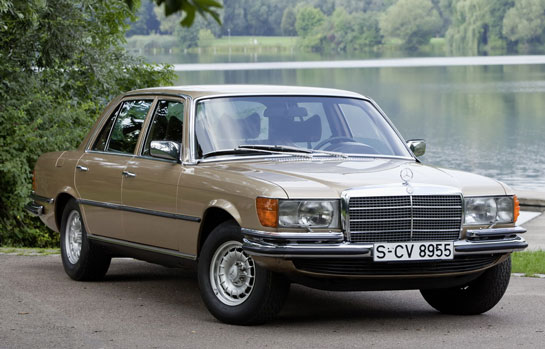
Dubbing a Ferrari into the soundtrack of Rendezvous was a stroke of genius for it added glamour and mystery. The reality was that a Mercedes similar to this one was used to film the run, not a Ferrari.
Lelouch set off in his Mercedes 450 SEL 6.9 on a morning in August 1976. Many–including me–believed, upon seeing the film that Claude was driving a Ferrari but he wasn’t. The belief came about because someone had expertly added and matched the sound of a Ferrari to the film’s soundtrack in post production. The one concession to safety was to position Elie Chouraqui, who worked as Lelouch’s assistant director and later directed his own films, near the guichets du Louvre with a walkie-talkie to warn Lelouch as he was about to cross the rue de Rivoli if there was any traffic. Fortunately there wasn’t, because the batteries on Chouraqui’s radio were dead.
35mm movie film comes in ten-minute rolls which meant that Lelouch had that much time to get to Montmartre or he would run out of film. At one point, as Lelouch nears Montmartre, he begins a turn into a street that he quickly aborts–a delivery truck was blocking the way and the film would have rolled out. Improvising, Lelouch carried on and took another route past the Cimetière de Montmartre (where I shot scenes for my movie Point of Departure), across the Place du Tertre ending up in front of the Sacre Coeur to meet his date (played by his wife) all before the ten minutes expired.
When the film played in cinema houses to enthusiastic audiences, it came to the attention of the police who summonsed Lelouch to the Préfecture de Police. In his autobiography Itinéraire d’un enfant très gâté (Itinerary of a very spoiled child), Lelouch describes the following exchange with the police official. “Give me your driving license,” Lelouch was ordered. A moment later, it was handed back to him as the official told him, “I promised I would take your license, but I didn’t say for how long,’ adding, “My children love your film.
The one constant in every Lelouch film is the obvious love of film-making. Watching any of Claude’s films, one gets the sense of how much fun he had making them. This was never more evident then with C’était un rendezvous. If you don’t know his work, may I suggest Toute une vie (And Now My Love), L’aventure, c’est l’aventure (Money, Money Money), Les Misérables and Roman de gare (Crossed Tracks). What , A Man and a Woman , C’était un rendezvous and all the other Lelouch films show us is what we go through to find, be and stay with those we love—even risking jail with a high-speed run across Paris.
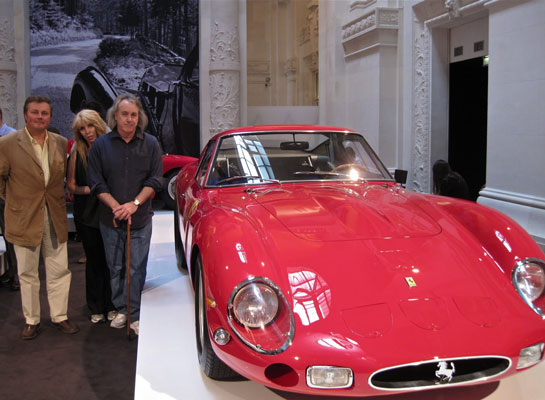
'Rebel Rebel' author Marc Sonnery, far left, Carrera Panamericana co-procucer Jeanetta Dumouchel and Stephen Mitchell next to the ex-Mitchell GTO, now owned by Ralph Lauren.
As a filmmaker, Lelouch has had a great influence on me and my own exploits. My late teen years were characterized by a passion for movies and cars—at 16 I bought an E-Type Jaguar, at 17 a Ferrari Berlinetta Lusso and by 18 or so, I was driving a Ferrari GTO. In an earlier harmonic of Rendezvous, I drove my Lusso from Woodland Hills to Las Vegas in two hours, fifty-five minutes though without a camera mounted on the bumper. I raced my GTO on Mulholland with ABC series actor Peter Helm and friends in an episode that was filmed and could have been inspired by Claude Lelouch. My first film was titled—Montmartre—shot in France and in French no less. Extracts of it can be seen on YouTube Watch Montmarte When Lelouch races past La Place du Tertre, I can see where a scene from my Montmartre was shot.
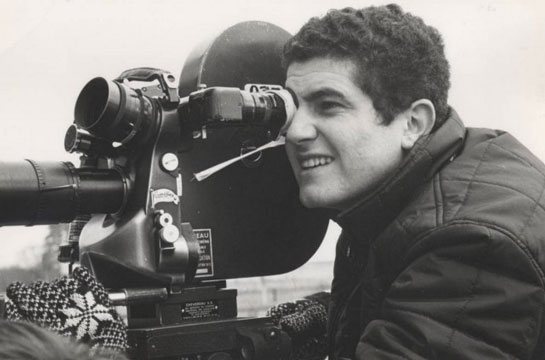
Claude Lelouch in the 1960s. Perhaps he'll take up on Stephen's offer to recreate Rendezvous in a Ferrari Italia?
Now almost 75, Claude Lelouch continues to make films in his unique style. I too am still making movies, my last was shot in Paris, Cannes, Milan, Venice (Italy) and Monaco. More recently, I shot a documentary about the original Carrera Panamericana road races run from 1950-54 Watch youtube and I continue to work on a project about the GTO. I was privileged to be a co-producer on Addiction Incorporated, a documentary produced and directed by Charlie Evans Jr. I love documentaries but soon, I will be writing and directing another movie. Paris continues to be my second home and my first love. I was just there after attending the Cannes Film Festival and I am looking into establishing a film school somewhere in France.
As for C’était un rendezvous, today it is more popular than ever—a touchstone for those who love cinema, cars, Paris and adventure. The Internet and venues such as YouTube have given a life to the legend of Rendezvous which will be shared by our children and theirs. It won’t get old; defiance never does and audacity never will.
Could Rendezvous be made today? Yes and no. Yes, we could do it. No, I fear it would not have the same successful result. Surveillance cameras would be onto us before we reached La Place de l’Étoile and a police helicopter would be descending upon us by the time we reached Place de la Concorde.
If the opportunity arose, what car would I choose to make the run? A 458 Italia, I think. I’d love to hear the sound of the tires on those Parisian cobblestones and the echo of the Ferrari’s engine bouncing off the walls of those narrow streets. Imagining how such an adventure might play out, my friend Chad Glass, who did a superb job of illustrating the poster for my documentary Carrera Panamericana (1950-54) has sketched “my” Ferrari 458 Italia as we defy the laws of physics and Parisian traffic in a re-creation of Rendezvous.
Would I really make the attempt? Absolutely and I’d ask Lelouch if he’d like to go along for the ride.
Rendezvous with 458 Italia
By Chad Glass
Prints will be available soon.
Contact information via Blogspot:
In French
Le retour de « C’était un Rendez-vous? »
Réflexions sur Claude Lelouch
Par Stephen Mitchell
Art par Chad Glass
Serait-il possible de recréer le film mythique de Claude Lelouch, “C’était un rendez-vous»? Le réalisateur Stephen Mitchell utiliserait la nouvelle Italia.
Art original pour VeloceToday par Chad Glass.
Quand Stephen Mitchell a été récemment introduit à la VeloceToday par Wallace Wyss, il nous en a dit un peu plus sur lui-même, mentionné Ferrari, le cinéma, et Paris. Nous avons additionné tout cela et lui avons demandé ses pensées sur, bien sûr, le film de Claude Lelouch « C’était un rendez-vous ». Bingo!! Nous avions appuyé sur le bon bouton.
Mitchell est né et a grandi pour avoir une carrière à Hollywood, littéralement. Originaire de Los Angeles, il a étudié le son, la cinématographie et l’édition avec les chefs de service de CBS Cinema Center à Studio City, en Californie, où Steve McQueen avait sa societé Solar Productions. Travaillant comme figurant et aussi acteur dans des petits rôles parlés pour le cinéma Hollywoodien, il a pratiquement vécu sur le plateau de la série télévisée Mission: Impossible, étant donné qu’un ami de la famille avait dirigé de nombreux épisodes de la série. Bien entendu, une carrière au cinéma était en préparation, mais au lieu d’Hollywood, la carrière filmique de Mitchell a commencé en France. “Je suis allé à Paris parce que j’ai vu le film de Claude Lelouch « Un homme et une femme ». Cela m’a montré exactement le genre de film que je voulais faire et qui ne se faisait pas à Hollywood.” Nous allons laisser Mitchell commencer à partir d’ici …
Alors que mon intérêt pour les films était déjà bien établi, très étrangement ma passion pour les voitures a pris racine lorsque que je me remettais d’une collision frontale arrivée sur l’autoroute Ventura. Je n’étais pas supposé survivre à la première nuit mais, à la fin, mon père et moi avons tous deux survécu. J’ai lu le magazine « Road & Track » l’un après l’autre et devint excité par Ferrari, la Formule Un et l’incroyable collection de personnages qui ont peuplé ces mondes. C’était un ami de la famille et mentor Paul Stanley, réalisateur qui m’a délivré une invitation permanente à visiter ses tournages, qui m’a dit que je devrais aller voir « Un homme et une femme » (1966). Il était impressionné par ce film et a pensé que je l’aimerais également. C’était un euphémisme.
Je ne peux pas dire ce qui m’a le plus impressionné dans « Un homme un et une femme », parce qu’il y avait tant qui me touchait à la fois. La belle Anouk Aimée avec sa sensualité réservée si différente de celle des actrices américaines a jeté un sort sur moi qui n’a jamais disparu. Les scènes ou Jean-Louis Trintignant teste la Ford GT40 et la Mustang de rallye à Montlhéry (où ma future Ferrari GTO s/n 3987 a remporté sa première course, conduite par Ricardo et Pedro Rodriguez le 21 Octobre 1962) ont augmenté le rythme de mon pouls au même titre que la partie du film traitant de la course au Mans. Même les scènes de l’hôpital ont résonné en moi pour les avoir vécues un moment, peu de temps avant. J’ai adoré les scènes du Rallye Monte-Carlo.
« Un homme et une femme » a été le premier film français que j’ai vu mais j’ai aussi aimé les films comme « A bout de souffle » de Jean-Luc Godard, « Bob le flambeur » et « Le samouraï » de Jean-Pierre Melville ainsi que d’innombrables films italiens dont « Il Sorpasso » (La Vie Facile) de Dino Risi et 8 ½ (Otto e mezzo) de Federico Fellini dans lequel Anouk Aimée a également jouée. « Un homme et une femme » a été novateur dans la façon de présenter l’histoire, dans un mode non linéaire avec un mélange de séquences couleur et noir et blanc. C’était presque un documentaire sur les voitures et les relations humaines à la façon qui me paraît être juste. Ce film m’a mis sur le chemin pour faire mon propre film des années plus tard en France et en français.
J’avais pris la décision que je voulais faire des films français et donc je suis allé en France. Je ne vivais pas à Paris depuis longtemps, que l’on m’a parlé d’un court métrage mythique réalisé par Lelouch. Mes amis de Paris, qui connaissaient ma fascination pour Lelouch et ses films, m’ont demandé si j’étais au courant de « C’était rendez-vous ». Surpris d’apprendre que je n’en avais pas entendu parler, ils m’en ont raconté l’histoire:
Claude s’était réveillé un beau matin, attaché une caméra au pare-chocs avant de sa voiture et foncé à travers Paris en brûlant feux rouges, esquivant les voitures et les piétons, dévalé les Champs-Élysées pour finalement aboutir à la Butte Montmartre, où se trouve la basilique du Sacré-Coeur. C’était une histoire passionnante à entendre mais il aura fallu de nombreuses années avant que je ne puisse voir le film grâce à Internet et YouTube.
Bien que ce film ait été projeté dans les salles de cinéma comme un court metrage précédant le film principal, il n’y avait pas d’argent à se faire avec « C’était un rendez-vous ». C’était l’œuvre de quelqu’un qui aimait aussi bien le cinéma que les voitures, ce qui décrit très bien Lelouch. Je ne perdis pas le fait qu’il me décrivit très bien moi aussi.
Durant ma vie à Paris, j’avais rencontré Jean Collomb qui était le chef éclairagiste de Claude Lelouch sur certains de ses films les plus célèbres. Jean m’a été présenté par des amis communs et, pendant que j’ai vécu à Paris, j’avais rencontré beaucoup de personnes qui avaient travaillé avec Lelouch: Lino Ventura, Françoise Fabian, Philippe Léotard, Charles Gérard, André Dussollier, Philippe Labro, Janine Magnan et Jean Mermet, mais jamais Lelouch lui-même. Une des choses que Jean m’a dit, est que Lelouch n’était pas homme à demander des permis préférant simplement « apparaître » et filmer la scène… moins on en dit, mieux c’est. Cette approche s’est mal passée le jour ou Lelouch a tourné une scène sur les Champs-Élysées dans laquelle un acteur habillé en flic devait être abattu et tomber au sol et, lorsqu’un bus de vrais CRS (vous savez, les gars avec les mitrailleuses) est arrivé… mais ça c’est une autre histoire. Tout cela pour dire que Lelouch ne s’embêtait pas avec l’obtention de permis de tournage, d’agent de la circulation obligatoire ou toute sorte de contrôle de la foule. Ce fut la guérilla cinématographique, née de la Nouvelle Vague après-guerre, à son apogée.
Beaucoup ont cru en voyant le film, y compris moi-même, que Claude était au volant d’une Ferrari, mais il n’était pas. Cette croyance était née, car quelqu’un avait ajouté et synchronisé d’oreille experte le bruit d’une Ferrari à la bande sonore du film en post-production. La seule concession à la sécurité fut de poster Elie Chouraqui, qui a travaillé comme assistant réalisateur pour Lelouch et plus tard dirigé ses propres films, près des guichets du Louvre, avec un talkie-walkie pour avertir Lelouch si il y avait du trafic, alors qu’il s’apprêtait à traverser la rue de Rivoli. Heureusement qu’il n’y en avait pas, car les piles de la radio de Chouraqui ne fonctionnaient plus…
Les pellicules de cinéma en 35mm étaient disponibles en durée totale de dix minutes, ce qui signifiait que Lelouch avait juste ce délai pour se rendre à Montmartre, ou bien la pellicule se terminerait. A un instant du film, alors que Lelouch s’approche de Montmartre, il commence à tourner dans une rue qu’il doit rapidement éviter, un camion de livraison bloquant le chemin, pour éviter à la pellicule du film de se terminer. Improvisant, Lelouch prit une autre route depuis le Cimetière de Montmartre (où j’ai tourné des scènes de mon film « Point of Departure »), à travers la Place du Tertre finissant en face du Sacré Coeur pour retrouver son rancard (joué par sa femme) le tout avant l’expiration des dix minutes.
Quand le film est passé dans les salles de cinéma devant un public d’enthousiastes, il a attiré l’attention de la Police qui a convoqué Lelouch à la Préfecture. Dans son autobiographie « Itinéraire d’un enfant gâté » Lelouch décrit l’échange suivant avec le fonctionnaire de police: « Donnez-moi votre permis de conduire ». Quelques instants plus tard, le fonctionnaire de Police le lui rendit et lui dit: « J’ai promis que j’allais confisquer votre permis, mais je n’ai pas dit pour combien de temps”, puis ajoutant: « Mes enfants adorent votre film. »
La constante de chacun des films de Lelouch est l’amour évident de réaliser. Il suffit de tous les regarder et l’on comprends combien de plaisir il a pris a les faire.
Si vous ne connaissez pas son travail, je peux suggérer « Toute une vie », « L’Aventure, c’est l’aventure », « Les Misérables » et « Roman de gare ».
« Un homme et une femme », « C’était un rendez-vous » et tous les autres films de Lelouch nous montrent surtout ce que nous devons traverser pour trouver, être et rester avec ceux que l’on aime, risquant même la prison pour une traversée de Paris à haute vitesse.
En tant que réalisateur, Lelouch a eu une grande influence sur moi et mes propres exploits. Mes années d’adolescence ont été caractérisées par une passion pour les films et les voitures. A l’age de 16 ans, j’ai acheté une Jaguar Type E, à 17 une Ferrari Berlinetta Lusso et à 18 ans, je conduisais une GTO Ferrari. Dans une précédente version de Rendezvous, j’ai conduit ma Lusso de Woodland Hills à Las Vegas en deux heures, 55 minutes mais sans caméra montée sur le pare-chocs. J’ai fait courir ma GTO sur Mulholland avec l’acteur Peter Helm et des amis, dans un épisode qui a été filmée et pourrait avoir été inspiré par Claude Lelouch. (http://www.youtube.com/watch?v=Md_jcC6OnIU).
Mon premier film était intitulé « Montmartre », tourné en France et en français, rien de moins. On peut voir des extraits sur YouTube (http://www.youtube.com/watch?v=Md_jcC6OnIU). Lorsque Lelouch arrive à La Place du Tertre, je peux reconnaitre où une scène de mon film « Montmartre » a été tournée avec une belle Jaguar.
Maintenant, à presque 75 ans, Claude Lelouch continue de faire des films dans son style unique. Moi aussi, je tourne toujours des films, le dernier ayant été tourné à Paris, Cannes, Milan, Venise (Italie) et à Monaco. Plus récemment, j’ai tourné un documentaire sur la course Carrera Panamericana originale de la période 1950-54 (http://www.youtube.com/watch?v=gmgNjpVdXhQ) et je continue à travailler sur un projet au sujet de la GTO. J’ai eu le privilège d’être co-producteur sur le documentaire « Addiction Incorporated », produit et réalisé par Charlie Evans Jr. J’aime les documentaires mais bientôt je vais écrire et diriger un autre film. Paris continue à être ma deuxième maison et mon premier amour. J’ai été la bas après avoir assisté au Festival de Cannes et je cherche à fonder une école de cinéma quelque part en France.
Quant à « C’était un rendez-vous », il est aujourd’hui plus populaire que jamais, une référence pour ceux qui aiment le cinéma, les voitures, Paris et l’aventure. Internet et les sites tels que YouTube ont donné une vie à la légende de Rendezvous, qui sera partagé par nos enfants et les leurs. Il ne vieillira jamais : la défiance et l’audace ne vieilliront jamais aussi.
Est-ce que « Rendez vous » pourrait être faite aujourd’hui? Oui et non. Oui, nous pourrions le faire. Non, car je crains que le résultat ne serait pas le même, ce ne serait pas aussi réussi. Les caméras de surveillance seraient sur nous avant que nous ayons réussi à atteindre la Place de l’Étoile et un hélicoptère de la police serait descendu sur nous avant même que nous ayons rejoint la Place de la Concorde.
Si l’occasion se présentait, quelle voiture devrais-je choisir de faire la course? Une 458 Italia, je pense. J’aimerais entendre le bruit des pneus sur les pavés parisiens et l’écho du moteur de la Ferrari rebondir sur les murs des rues étroites. Imaginant à quoi une telle aventure pourrait ressembler, mon ami Chad Glass, qui fait un superbe travail d’illustration sur l’affiche pour mon documentaire sur la Carrera Panamericana (1950-1954) a esquissé « ma » Ferrari 458 Italia alors que nous défions les lois de la physique et de la circulation parisienne dans une re-création de Rendezvous.
Ferais-je vraiment cette tentative ? Absolument, et je demanderais à Lelouch si il souhaite faire partie de la balade.
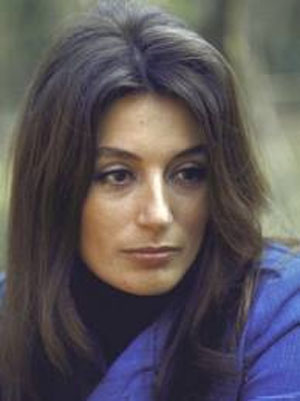
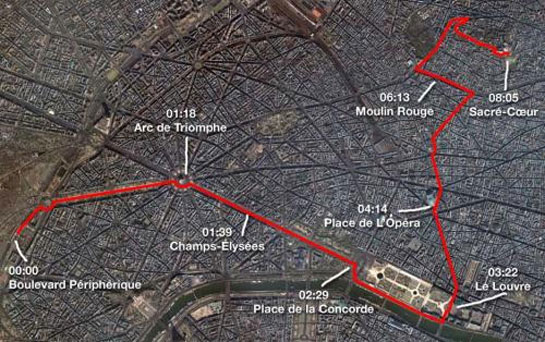
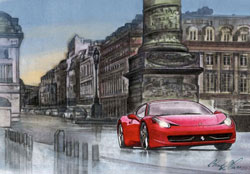
Great story. I always thought the camera car was some sort of racing Ferrari with straight cut gears. Anyway, when I was in advertising in the Sixties, I remember Claude showing up at Campbell Ewald in Detroit wanting to do a commerical. Even though Detroit was off the beaten path for the cultural elite, the truth was many famous directors and producers came through town and made us a presentation hoping to score a commercial.
I think we tossed him a bone.
Bonjour Steve,
This is right, Claude Lelouch filmed the “Rendez-vous” with his own 6.9 Mercedes, with camera attached under the front bumper. Now, concerning the sound recorded, this is NOT a Ferrari 275, but a Lamborghini Miura engine noise. I owned quite a few of each of them at the time and I am 100 % sure that this is a Miura engine. : noise, engine revs between gears etc..: subtil but real difference, trust me!
When passing Neuilly, you could see Lelouch’s yellow 275 GTB neglectly parked – and pretty dirty by today’s standards- at the corner 0f rue Parmentier and Boulevard VictorHugo.
Best, Patrick
Straight-cut gear is typically Lamborghini Miura; as well as engine noise, quite different from a Ferrari one. If pictures were taken by the 6.9 Mercedes camera car, I am almost certain that Lelouch ALSO used a REAL Miura with related noise caption. Lelouch had an agreement with the prefecture de Police afterwards, not to mention anything publicaly, and I wish -one day- he can say privetely that the car used in the film was indeed a Lamgorghini Miura and not a Ferrari.
Patrick,
The engine on the soundtrack always sounded like a Ferrari to me and my friend Matthew Ettinger who owned the Breadvan and a host of other Ferraris swears it cannot be a Miura. I’ve only driven one Miura and am therefore no expert. To satisfy my curiosity, I have sent the question to Lelouch via his executive secretary. Perhaps we’ll have an answer before too long.
Whatever the engine, it certainly makes the right sounds!
It was evident that something wasn’t right–but isn’t it fun anyway? I’ve been to Paris enuf to know approximately how fast you’re going when the road striping goes by at the movie’s speed, and a Ferrari would have to have something like a 7.5 axle ratio to get through that many shifts for the small change in speed. I had a Miura as a daily driver for several years; it must have a different firing order from a Ferrari because I could tell how different a 400 Lambo sounded on the street in Italy compared to a Ferrari. If I had to bet a hunnert bucks I’d say the sound was that of a Lamborgini.
I try to watch “Rendezvous” at least once a month. It gets my heart rate pumping much more than the treadmill does and is infinitely more satisfying. Thanks for a GREAT article on one of my favorites!
I feel the same way about the film, Mary Ann. I’ve covered every part of this route while living in and visiting Paris and each section stimulates great memories for me in addition to the charge of watching Lelouch speeding through the city the way he did. It never grows old!
You can see the Making Off of “Rendez Vous”, here :
http://youtu.be/AHn5Q15kaIA
Like so many of us, I was hooked the first time I saw it back in the late 1990’s. Then there was much discussion about how it was shot, who was driving, etc., etc. Some said it was Lelouch. Someone else said it was Jean-Pierre Beltoise, ostensibly Lelouch’s brother in-law. And that it was not a Ferrari, but a Matra. All widely off the mark. Then a few years ago, I read a comment from an engineer – obviously a very anal one – who measured the distance from the garage to Sacre Couer, and then figured out that the camera car couldn’t have been doing much more than 40 mph. Many of us scoffed at that, but then a couple of years later, the truth came out, that it was indeed Lelouch himself in a Mercedes, only to be confirmed again by Stephen. Talk about rain on my parade. But then again, it’s a classic example of a film maker at his best. With the addition of masterfully edited SFX, it works and then some. As a famous DP friend of mine once said, “Creating speed on film is an illusion!” And if you know how to do it, it works.
Its actually a Citroen 2CV sped up X 16 times……who cares what car it is.
Its a great piece of film footage that could never be re-made with today’s traffic and legalities.